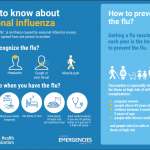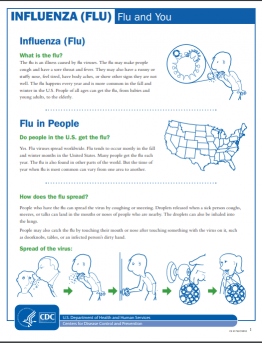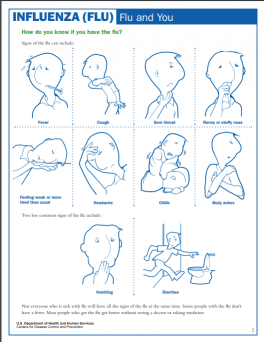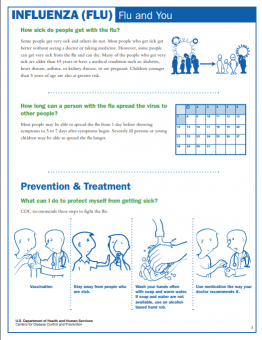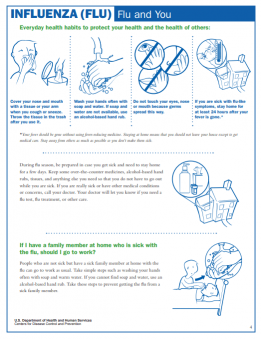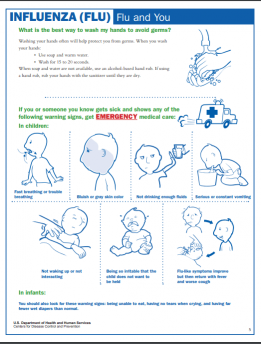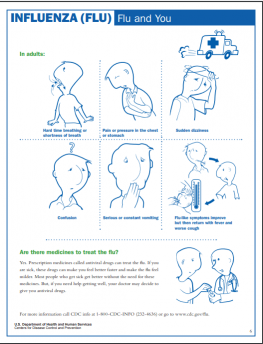Flu; Prevention and Diagnosis
Influenza is an acute respiratory illness that is significant in its very high rate of spread, unpredictability, epidemics, complications, and high mortality, especially in high-risk groups, with far-reaching social and economic consequences, and the ability to transmit animal and human species via creating new viral subgroups.
So far, three types of influenza; known as A, B, and C, have been identified. Type A influenza with H1N1, H3N2, and H2N2 subtypes has been able to cause epidemics and globalization of the disease. The B-type virus is less responsible for causing regional or widespread epidemics, and the C-type has been implicated in the development of smallpox and small localized epidemics. In addition to humans, influenza has been observed in various species of birds and many mammals, including horses, pigs, and cats, which can be transmitted to humans by influenza A / H5N1 and A / H7N7, which can lead to severe death. The largest flu outbreak in Spain was in 1918-1919 which caused 500 million deaths and 40 million deaths worldwide.
The incubation period of the disease, from the time of infection with the virus to the onset of the disease, is about one to four days, depending on the amount of virus entering the body and the host’s immune status. The spread of the virus begins the day before the onset of symptoms, peaks within 24 hours, peaks for one to two days, and resolves rapidly after 5 days. Infectious virus is rarely derived from blood.
Influenza virus actually attacks the respiratory tract. The virus is dangerous for the elderly, very young, and those undergoing medical care for heart disease, diabetes, or cancer.
A) uncomplicated influenza:
Symptoms of influenza usually appear suddenly and include chills, headache and dry cough, followed by high fever, muscle aches, restlessness and anorexia. The fever usually lasts for three to five days, at which time the general symptoms appear. Respiratory symptoms persist for another three to four days. Cough and weakness may persist for two to four weeks after symptoms subside. Mild infections without clinical symptoms are also seen. The above symptoms may be caused by any breed of influenza A or B virus. In contrast, influenza C virus does not cause the above influenza syndrome, and its symptoms usually present as a cold. Cough and congestion may persist for several weeks in patients.
The clinical symptoms of influenza in children are similar to those in adults, although children may have more severe fever and more symptoms of gastrointestinal upset, fever-related seizures sometimes occur. Influenza A viruses are an important factor in the development of Croup in children under one year of age. Eventually, inflammation of the inner ear may occur.
B) Pneumonia:
Severe complications of influenza are common in the elderly and weak, especially in those with chronic illnesses, and pregnancy appears to be a risk factor for certain lung complications in some epidemics. Increased mortality from influenza epidemics is often associated with pneumonia, heart-lung disease.
The cause of influenza infections that can cause pneumonia can be a virus or a bacteria or a combination of both. In these cases, increased mucus secretion causes viral or bacterial agents to easily enter the lower respiratory tract. Influenza infection increases patients’ susceptibility to bacterial re-infection, leading to dysfunction of cell and eyelash cells and phagocytic cells and providing a rich environment for bacterial growth by alveolar secretion.
Bacterial pathogens are often Staphylococcus aureus, Streptococcus pneumoniae, and Hemophilus influenzae.
How the disease transmitted
Patients with influenza can be transmitted to others from 24 hours before the onset of symptoms to a maximum of 7 days later:
- Human-to-human transmission: Inhalation of virus-infected air (with coughing and sneezing) can cause illness.
- Contact transmission: If a person sneezes or coughs in their hands, the virus can be easily transmitted from the patient’s hand to all surfaces such as handles, doors, fences next to stairs, books and notebooks, and so on.
If healthy people touch infected surfaces and then rub their hands (eyes, nose, mouth) with the virus, the virus is transmitted to their bodies.
Symptoms of flu-like illness
- Equal fever or above 38 degrees, cough and onset of symptoms over the last seven days
Symptoms of severe influenza
- Equal fever or above 38 degrees, cough and onset of symptoms in the last seven days plus the need for hospitalization
Types of laboratory tests used to diagnose influenza virus and performed in a medical and specialized transplant diagnosis laboratory include:
- Rapid flu tests that include antigen detection tests and molecular tests such as RT-PCR
- Other tests that are required along with these tests include the following: RSV antigen testing / blood tests such as CBC



